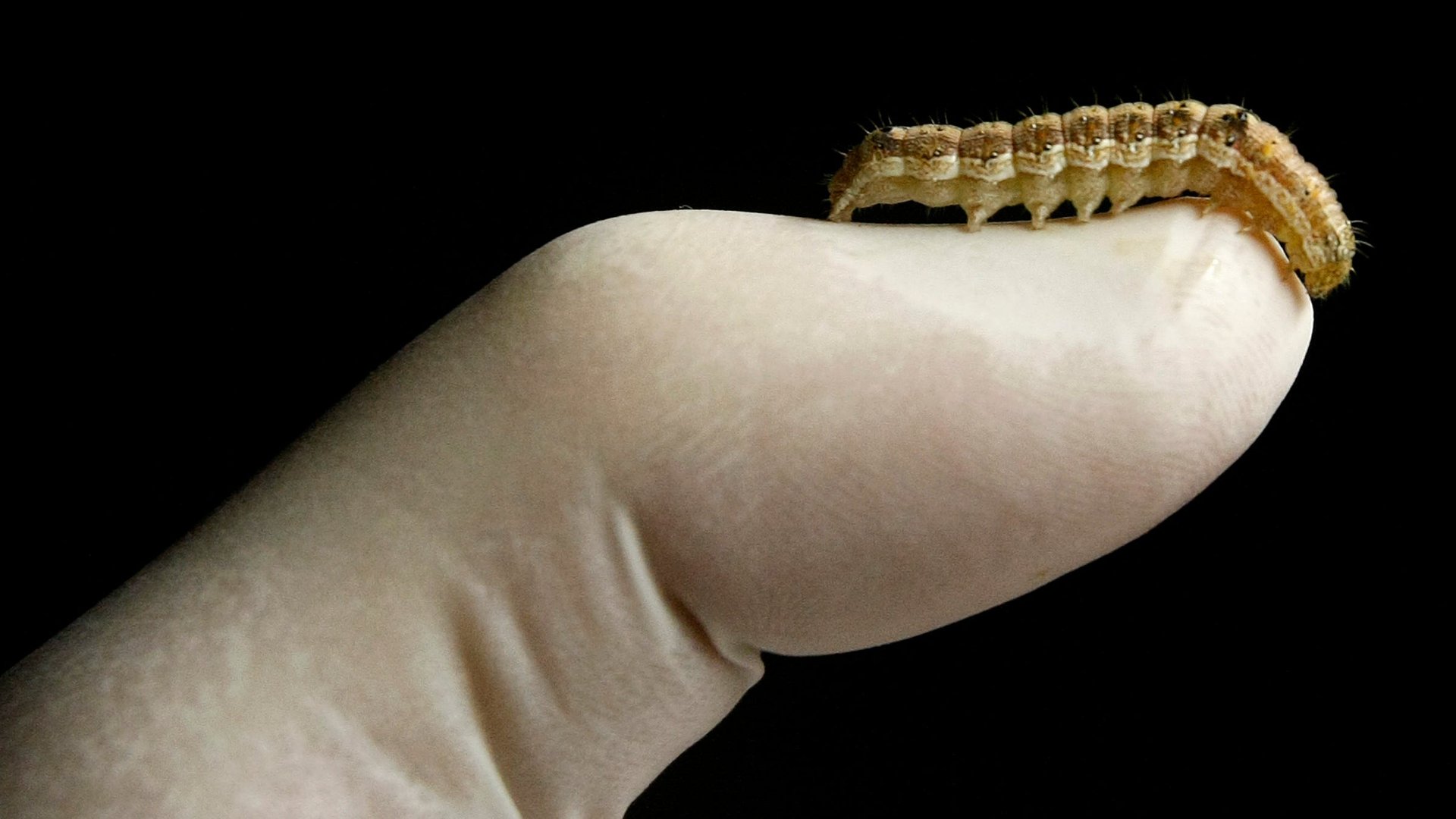This adorable little caterpillar is causing billions of dollars of damage and a state of emergency in Brazil
The Helicoverpa caterpillar’s cuteness may only be surpassed by its surprising lethality.


The Helicoverpa caterpillar’s cuteness may only be surpassed by its surprising lethality.
Brazil’s agriculture ministry was forced to declare a state of emergency this week in its main crop growing region, Mato Grosso, due to an infestation of the little caterpillars, as well as in the state of Bahia, where growers lost money last year because of the pests.
Smaller than a human thumb, and with a knack for ploughing through soy, corn and cotton, the Helicoverpa has been terrorizing Asia, Australia and Africa since the 19th century. In India and China, some 50% of pesticides (pdf) are used to kill the caterpillars. But they hadn’t appeared in South America until last year. In response, Brazil’s agriculture industry recently approved the importation of more powerful pesticides to fend off the menacing insects, but plenty of damage has already been done: The tiny buggers cost Brazil an estimated $4.7 billion last summer alone. Outbreaks have been reported in as many as 21 different states throughout the country.
Even global soybean giant Monsanto is sweating the many-legged crop muncher. In a call with investors earlier this month, chief technology officer Robert Fraley acknowledged that the pests are a “top-of-mind topic for both ourselves and for the growers,” and added that Monsanto has plans in place to deal with the caterpillars. “We’ll be in a position before the end of the decade to have multiple-mode-of-action products in that marketplace.”
While the infestation has yet to affect Brazil’s soy or other grain prices, it’s already increasing production costs where the caterpillar is present, since farmers have to apply several layers of insecticide and, potentially, destroy large swaths of infested plants. If the problem persists, however, the effects could spill over to Brazil’s soy and corn supplies, and subsequently to global grain prices. Brazil is the world’s largest exporter of corn, and is vying to replace the US as the world’s largest exporter of soy—it’s currently a close second. China, which consumes over 60% of the world’s soy and is slated to increase its corn imports, can’t be happy to see that a longtime agricultural foe has gained a foothold in the breadbasket of South America.